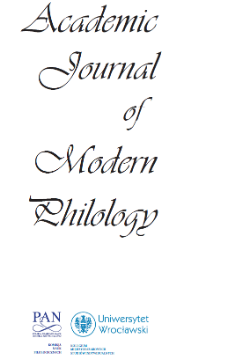Relexification of English L e t ’s in Japanese
Relexification of English L e t ’s in Japanese
Author(s): Hiroko WakamatsuSubject(s): Communication studies, Pragmatics, Translation Studies
Published by: Komisja Nauk Filologicznych Oddziału Polskiej Akademii Nauk we Wrocławiu
Summary/Abstract: This paper exhibits the ways in which English let’s is borrowed into contemporary Japanese. It shows that, in addition to the insertion of English phrases containing let’s into a matrix of Japanese, let’s alone is borrowed, whose process involves relexification. This relexification, however, diverges from the standard one, because the English word order introduced by let’s is also borrowed into Japanese. In other words, a verbal element always comes after let’s, while the Japanese word order is basically SOV. Hortative and volition are expressed in Japanese usually by a sentence final particle -yoo or -oo, which is attached to verbs. Let’s, or rettsu in Japanese, relexifies this Japanese sentence final particle, when rettsu is followed by a verb (e.g. Rettsu ikou ‘lit. Let’s go’) or a verbal noun (Rettsu kukkingu ‘lit. Let’s cooking’). When rettsu is followed by a simple noun (Rettsu buraunii ‘lit. Let’s brownie’), rettsu relexifies a Japanese verbal element as well as the sentence final particle. In cases such as the latter, the simple noun following rettsu needs to satisfy the first sister principle of the implicit verb relexified by rettsu.
Journal: Academic Journal of Modern Philology
- Issue Year: 2019
- Issue No: 8
- Page Range: 215-224
- Page Count: 10
- Language: English

